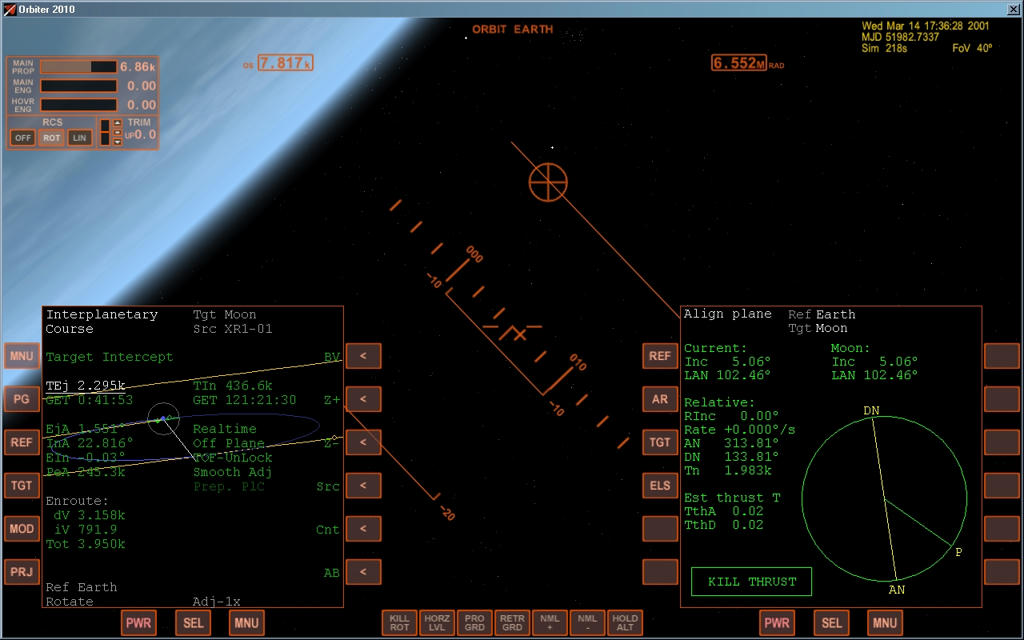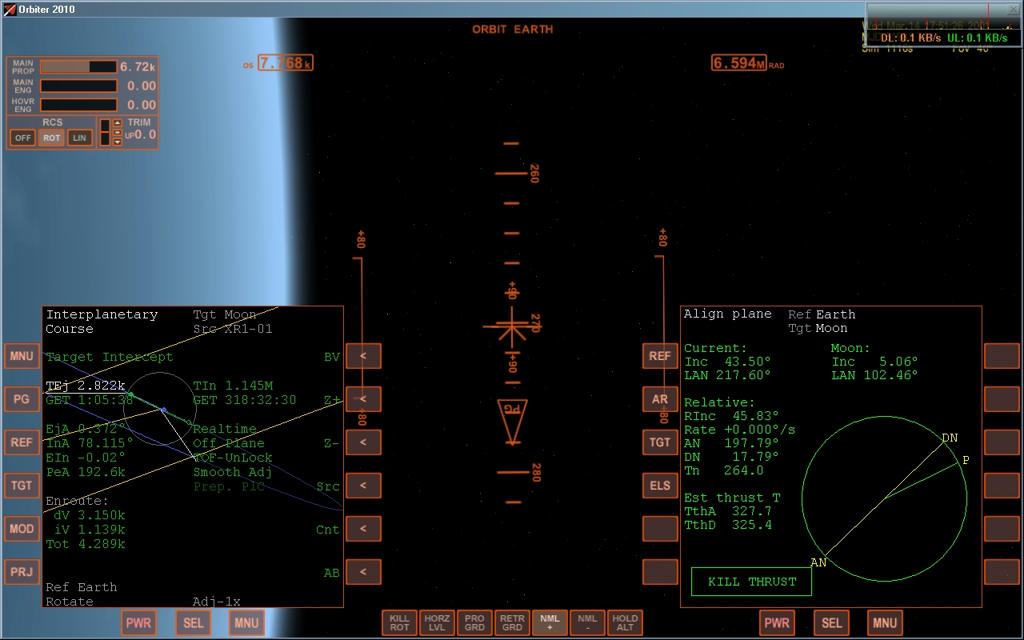Xavier
New member
I launch at the wrong times apparently, because my escape vector is too high.
How can I calculate a launch window to other planets? Is there an MFD?
How can I calculate a launch window to other planets? Is there an MFD?
It won't be nearly as complicated to to interplanetary transfers if you just launch into a nice circle orbit before making your interplanetary burn then you can do all your planning based off the circle.
Whether you are in orbit or not doesn't have anything to do with whether or not you are using a good launch window. Until you have selected the launch window you can't predict the ejection plane - so your nice, circular orbit will most likely NOT be aligned with the ejection plane. Making the plane change from your parking orbit's plane to the ejection plane can cost more dV than the transfer burn, because the plane change will happen in low orbit where plane changes are most expensive. If you eject in a poor plane, you will have a much larger plane change that will need to made enroute - unless you get lucky enough that the intercept point coincides with a node between your ejection plane and the target's orbital plane.
What ever tool or method you use to find a window, efficiency requires you to launch into the correct orbital plane - the ejection plane, and to do so at a time when the energy required for the transfer is at a minimum.
Sure, some vessels have enough delta-V to compensate for poor planning, but an interplanetary flight should be planned BEFORE launch.
I just do off-plane intercepts- no problem
who said the circular orbit wasn't aligned with an ejection plane anyways?
There really isn't any singular eject orbit plane. There's a singular eject vector that puts you on your transfer orbit, but how you get to it ... well, TransX will show you how to get there from a huge range of LEO planes. It's the "Ej Orientation" parameter in the Escape stage.the ejection plane
There really isn't any singular eject orbit plane. There's a singular eject vector
TransX will show you how to get there from a huge range of LEO planes. It's the "Ej Orientation" parameter in the Escape stage.
The eject vector is on an infinite number of planes. That's the point. They're all good. No plane is optimal for all starting points. NASA picks the one that's cheapest to reach from Cape Canaveral From the ISS, it'll be cheapest to reach another, and from the Moon, a third.lines are on planes.
No. A point is on an infinite number of planes. A vector is NOT a point - it is a line, and lines exist on a finite number of planes. In reality, a vessel doesn't eject in a straight line (we use a vector in calculations because it's simpler, and close enough), rather it travels in a curve - and curves exist in one plane only.The eject vector is on an infinite number of planes.
This is a VERY interesting issue. I'd like to ask you if have have an idea of the algorithm IMFD uses to find TIn. Let's take for example the classical Earth-Moon trip, Off-Plane. When you target, you'll see that TIn assumes always, does not matter wher you are, if on surface or in any orbit, a value between 390ks and 460ks. I may be wrong, but to me, normally that value has nothing to do with the FIRST BEST window available, because if you tune TIn manually starting from 0, you should find a better, more efficient time of intercept. It seems more to me a default or failsafe value. What do you think about?...For any interplanetary transfer, there is exactly one optimal plane on which you should leave the source. This will vary depending on the type of transfer (Off-plane, target plane, etc), but for any specific transfer (ie, window and transfer type) there is ONE optimal departure plane. For any given departure plane there is ONE optimal ejection plane (although either prograde or retrograde will work)....


That's why I was asking about that "variable" default TIn value - it's rather important for Surface Launch.IMFD _does not_ optimize your transfer.
I may be wrong, but to me, normally that value has nothing to do with the FIRST BEST window available, because if you tune TIn manually starting from 0, you should find a better, more efficient time of intercept. It seems more to me a default or failsafe value. What do you think about?
Just another small thing: while an aligned plane Eject should be just a little more efficient than an Off-Plane, it seems that iV value is far greater in an Off-Plane,

